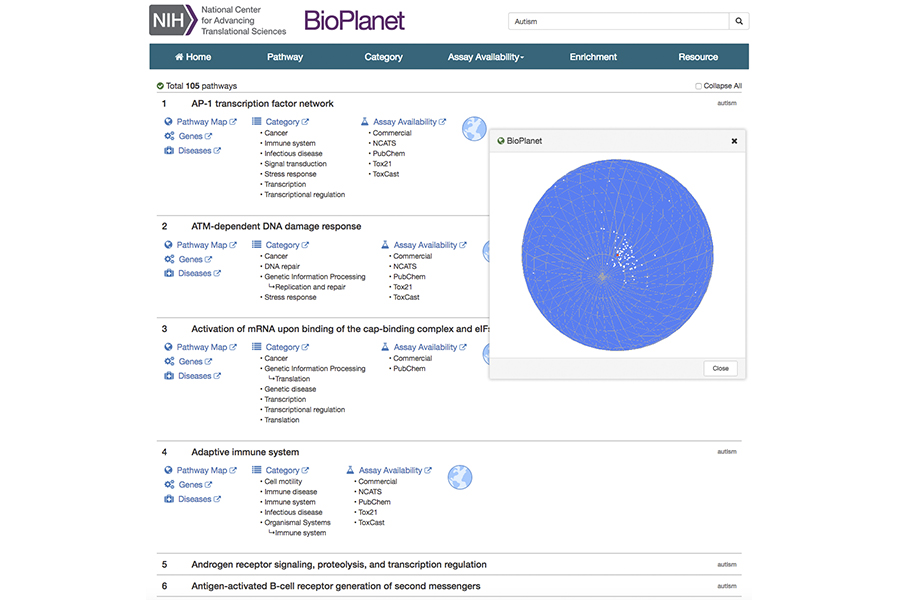NCATS BioPlanet: A Resource for Discovery

An example of pathways involved in autism in the BioPlanet database. When clicked, the interactive BioPlanet globe provides the name of specific pathways and its relationship to similar pathways.
To better understand – and ultimately predict – how compounds and drugs affect the body or impact a disease, scientists examine biological pathways, complex cellular thoroughfares of chemical signals, chemical reactions and other processes that occur within and among cells. They can design assays, or tests, to determine what happens to a pathway when it is disrupted or altered, and how it matters to cells. But knowing which individual pathways to focus on can be challenging.
To meet this challenge, NCATS scientists and their colleagues have created a one-of-a-kind database that details the body’s biological pathways. The new resource promises to help bridge a translational science gap by enabling researchers to more readily study gene activity, gather insights on disease mechanisms, shed light on when and how compounds are toxic to cells and more.
“BioPlanet is a single collection of all known biological pathways operating in human cells. It is a general, comprehensive resource for the entire biological research community to use,” said NCATS scientist Ruili Huang, Ph.D. “Previously, researchers would have to go to different databases and not everyone had the skills to link data from those different sources.”
BioPlanet is the first attempt to fill this void, and it took more than five years to build. The brainchild of former NCATS Director Christopher P. Austin, M.D., it combines data from seven pathway databases and incorporates 1,658 human pathways. The database is searchable by keywords, such as those that appear in a gene or pathway name or by disease. Scientists can visualize pathways on a three-dimensional globe, which inspired the name BioPlanet.
Biological pathways frequently overlap and interact. BioPlanet allows researchers to study and analyze human pathways and how they connect. They can use the resource as a starting point for generating hypotheses and designing experiments to better understand how biological systems function and work together.
For example, a researcher studying a set of disease-related genes can search the BioPlanet database for the corresponding biological pathways, then use that information to identify places, or targets, in a pathway that could be affected by a drug. Scientists can design assays to screen thousands of compounds to find those that work against such targets, and possibly, the disease. Similarly, scientists can use BioPlanet to create a set of assays to determine and predict the toxicity of compounds to cells.
NCATS plans to continually expand and update BioPlanet. Because the resource currently includes only human pathways, there also are plans to add pathways for nonhuman species. Austin, Huang and their colleagues recently described BioPlanet in Frontiers in Pharmacology.


